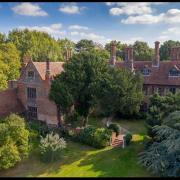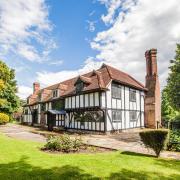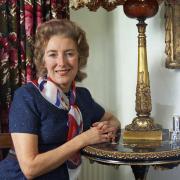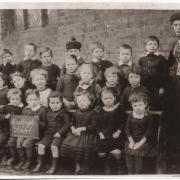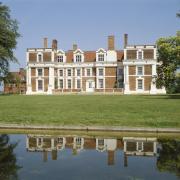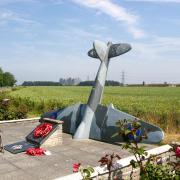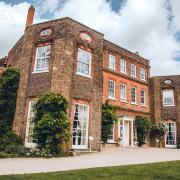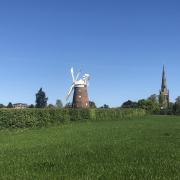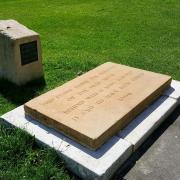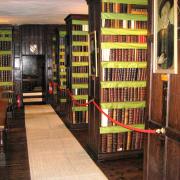We step inside the stunning Mulberry House in High Ongar to get a glimpse into its illustrious past
Grade II listed Mulberry House is the former Rectory of High Ongar. As with many Georgian houses of its kind, Mulberry House replaced a much older Tudor house constructed of wattle and daub in 1767, when it was likely built for Reverend Joseph Henshaw in the newly fashionable 18th-century style on three floors.
Prior to this, the old house was quite large, owing to the fact that in ecclesiastical terms High Ongar was an important parish. The church at High Ongar was classed as a ‘mother church’, meaning that it was the principal church in the area. This is easily apparent since in the 17th century the church was a manor in its own right, holding around 90 acres of glebe and owning nine properties on High Ongar Road.

The original rectory was a large property containing 14 rooms with a number of outbuildings, including a dovecote. The service wing of the new house, located at the northern end of the old house, was first built to house the builders (and is believed to incorporate some of the earlier Tudor house). This was important since the building project took ten years to complete. The moat at Mulberry House is still here today, and it is likely that the mud from the moat provided what was needed for the construction of the Tudor house all those years before.
Mulberry House would not look so different to how it was first constructed around 250 years ago. The doric porch still stands elegantly, supported by its columns, frieze and pilaster. Many of the windows were blocked up to avoid paying window tax in the late 18th century and were not unblocked until 1958, despite the fact that window tax was abolished in 1850. Water was first supplied to the house in 1914. Prior to that, water was gathered from the well, which is under the kitchen floor. The original pump can still be seen in the kitchen today.
Edward Earle became the Rector of St Mary the Virgin of High Ongar in 1788 and lived at Mulberry House. He remained rector for an extremely long period – 33 years no less. If you thought that was a long tenure, his eldest son, Henry John Earle, held the position as minister of the church for a period of 60 years, from 1821 right up until 1881. Today, a vicar will stay at his parish between five and ten years – how times have changed!

The current owners explain that ‘during this time, it was more than just a home to the ministers who lived there; it was home to their families and it was part of the local community too. The Rectory Cottage was used as the village youth club and games were played on the grounds. Tennis courts were situated on the site of the former Tudor House. One former rector reputedly kept a horse in the kitchen!’ After the Earle family line ceased as church ministers, a man called William Henry Bond took over the post. Bond donated the stained-glass East window in High Ongar church.
Unfortunately, as was the case with many rectories, the house and grounds became expensive to maintain, and the decision to sell the house was reached. The Church of England sold the rectory to a Canadian director of Ford Motor Company named Rafus Maynard, and his English wife Sylvia, in 1975. The couple only owned the Rectory, which they most likely renamed Mulberry House, for four years, but during this time they completely restored it. They famously installed a sunken bath complete with gold-plated taps and flanked by a mural of London viewed from the vantage point of Somerset House. In 1979, Mulberry House was bought by the Trustee Savings Bank who used the property as a training centre.

The current owners, Ray and Ann George, bought Mulberry House in 1995 and have transformed it into a successful hotel and wedding venue. In the 22 acres of grounds, a fine collection of trees is admired, including a mulberry tree, lime, ash, elm, chestnut and yew, as well as a wellingtonia redwood planted to commemorate the Battle of Waterloo.
The Georges have transformed the site of a conference centre and swimming pool into the delightful Mulberry Suite. With its vaulted ceiling, the Mulberry Suite can seat up to 130 wedding guests. The owners also restored the Chinese Chippendale-style bridge that leads to an the island. The lake is now pleasantly stocked with numerous types of fish and birds, including kingfishers. Presumably, the bride wouldn’t mind being upstaged by this beautifully dressed bird on her big day.
You may also like...
History of Prittlewell Priory, Southend: https://www.greatbritishlife.co.uk/lifestyle/heritage/history-of-prittlewell-priory-southend-essex-9142242
John Ball and the Peasants' Revolt: https://www.greatbritishlife.co.uk/lifestyle/heritage/john-ball-and-the-peasants-revolt-9142306
Bloody Mary's would-be Essex escape: https://www.greatbritishlife.co.uk/lifestyle/heritage/queen-mary-tudor-in-essex-9142352




